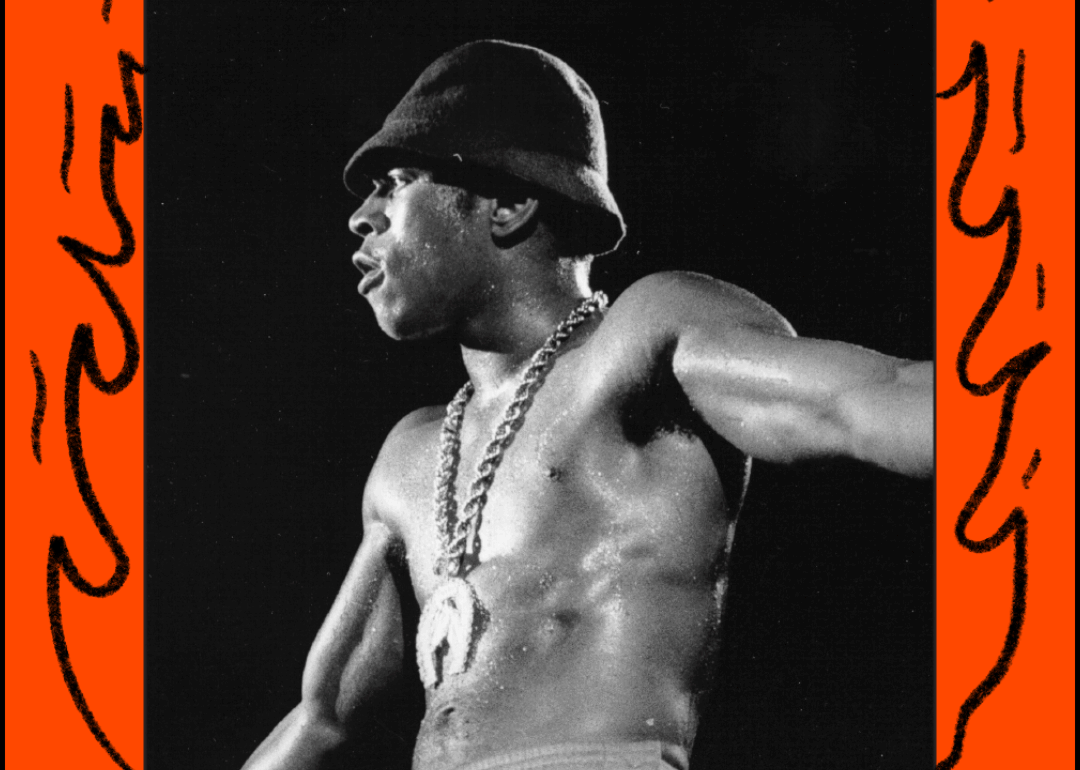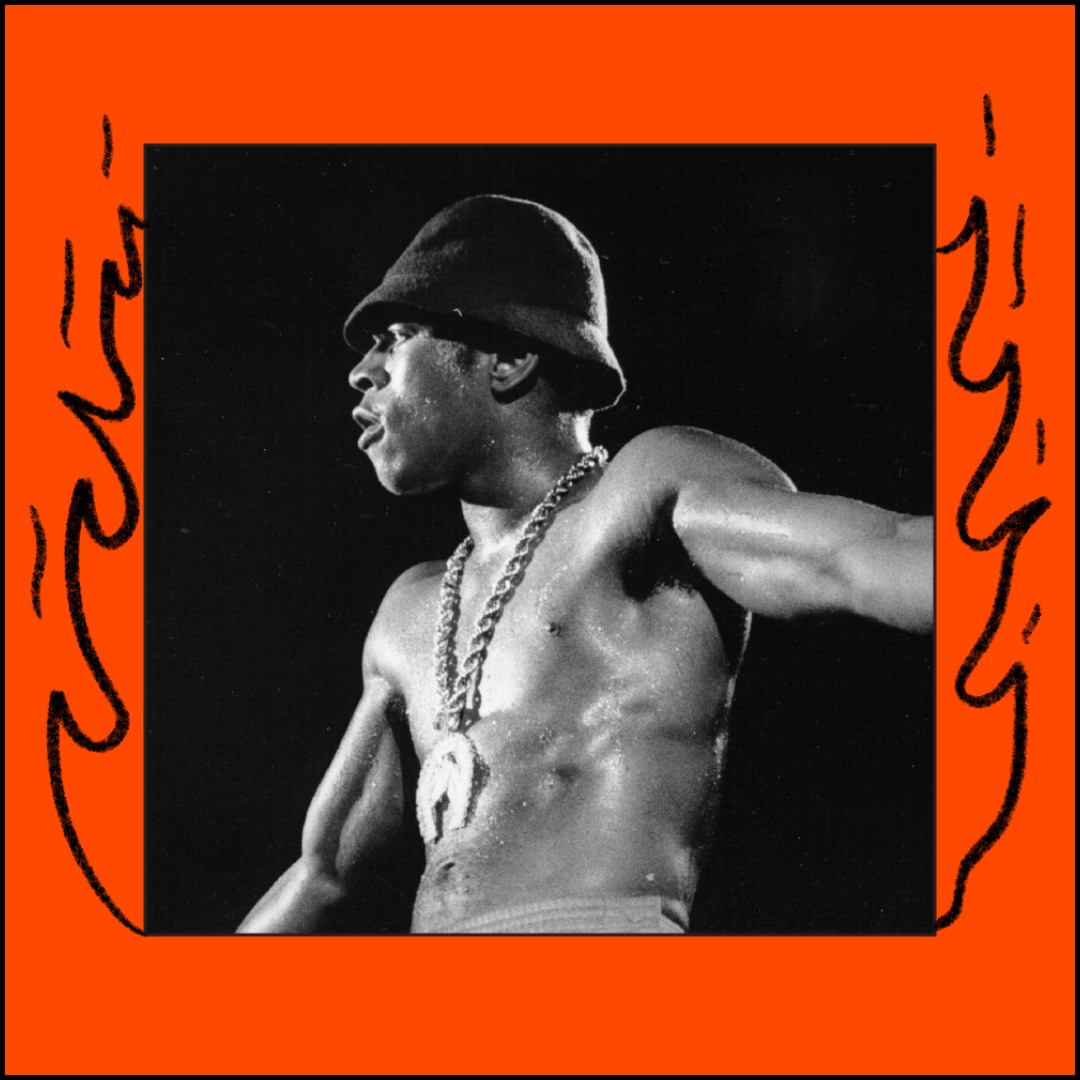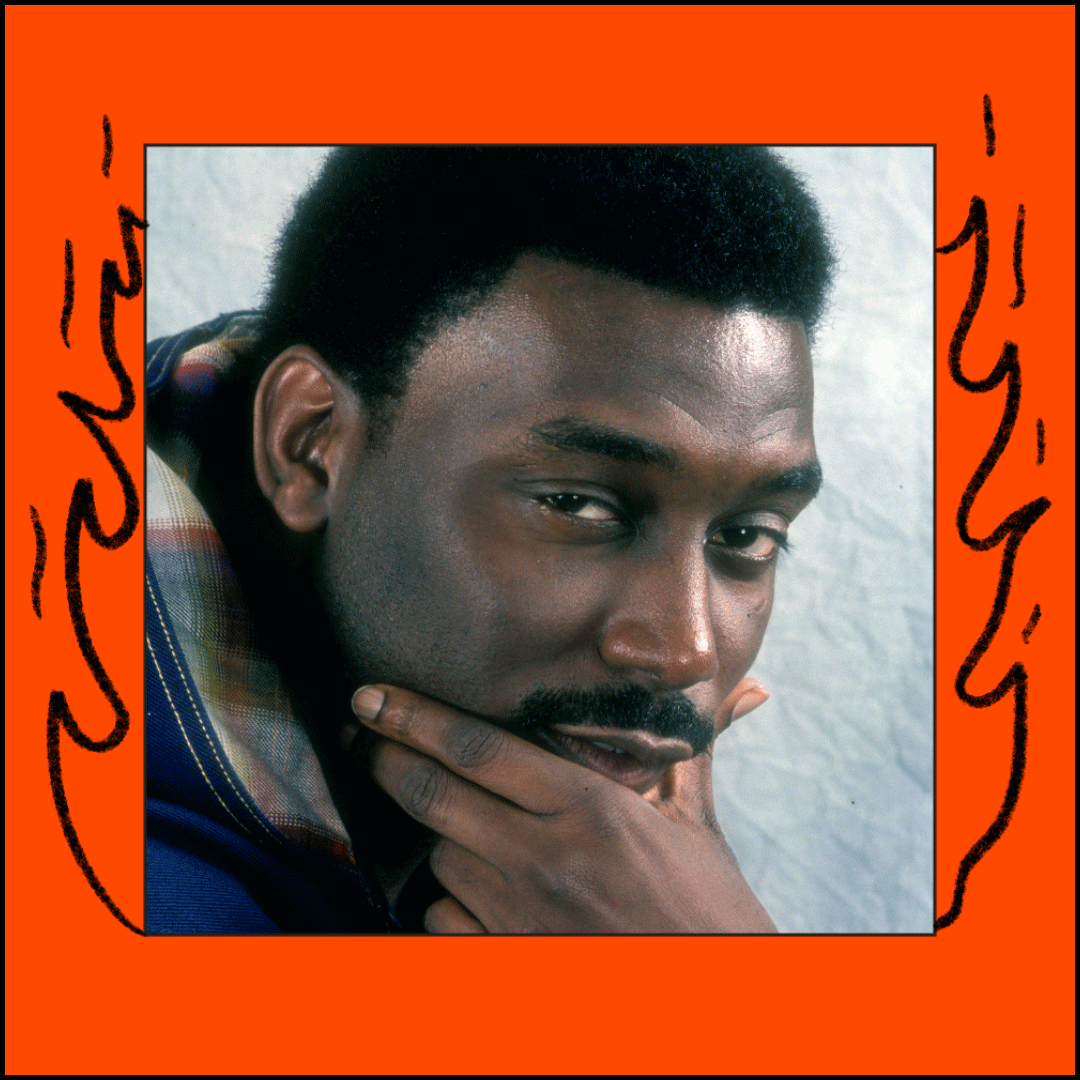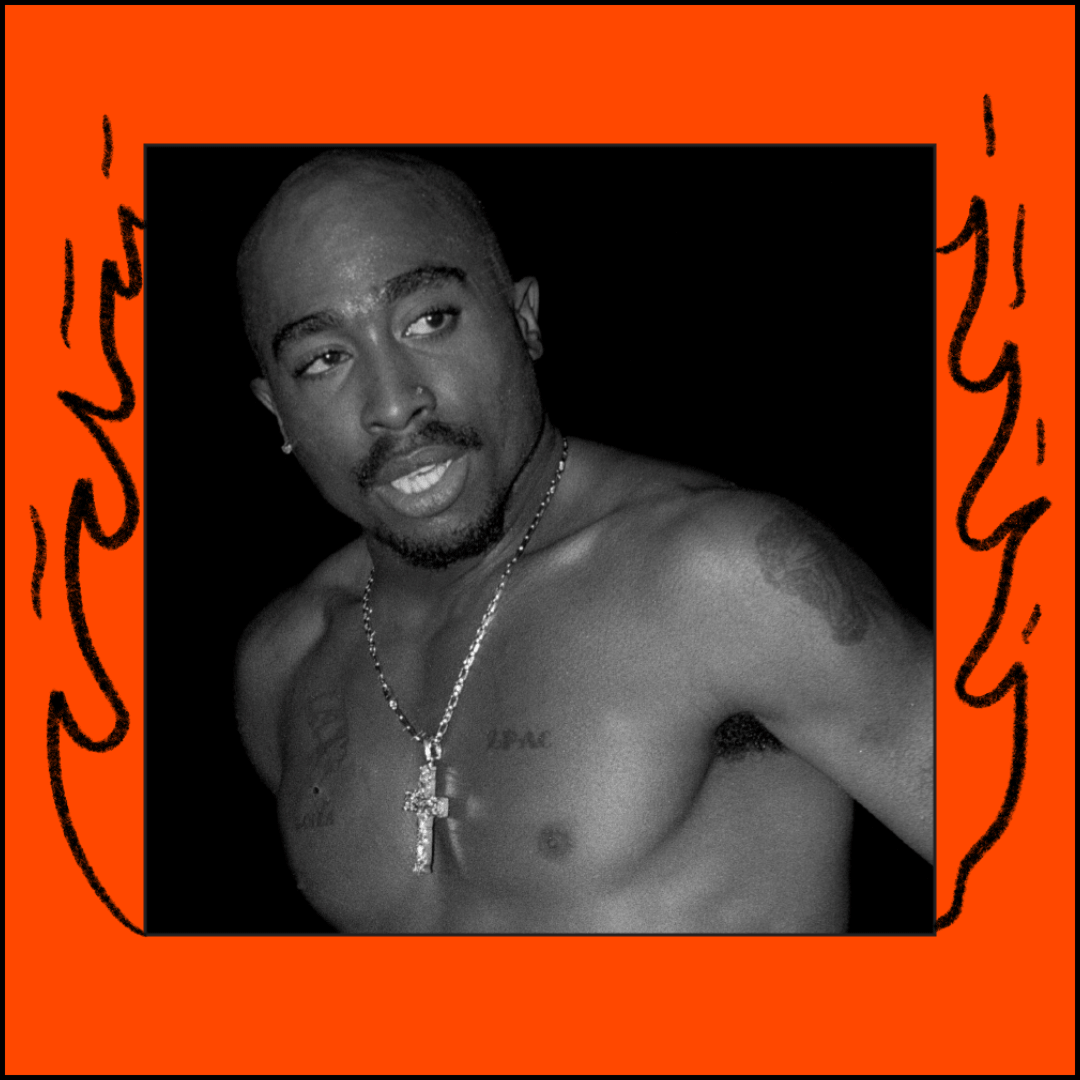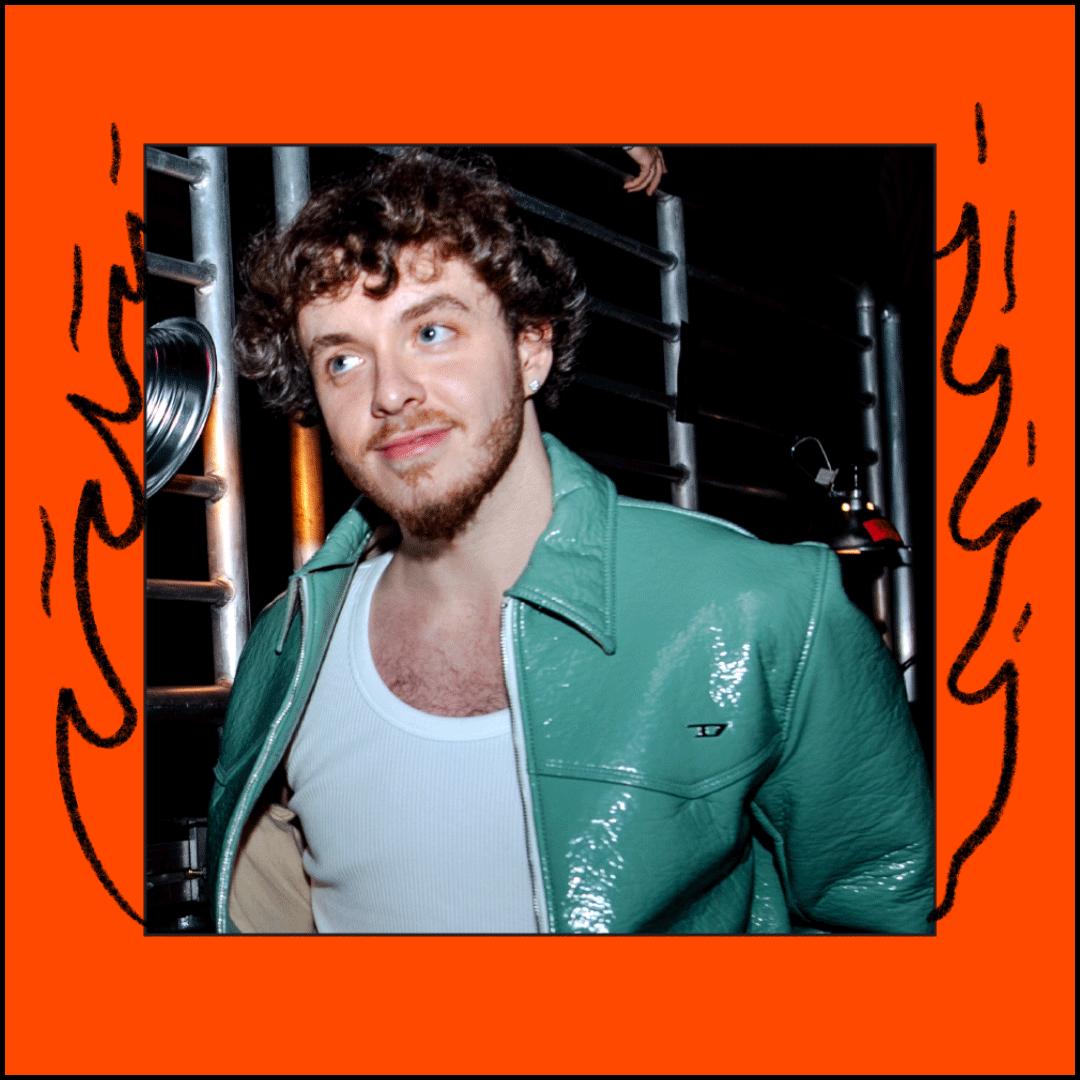It was the summer of 1995. Word got around that LL Cool J was filming a music video in my neighborhood. At that point, the man with the most sensual alias in rap, Ladies Love Cool James, was a dimpled crossover heartthrob on the heels of releasing his sixth album, Mr. Smith. The same James Todd Smith who grew up around my way, in St. Albans, Queens, with his mother and grandmother, had gone from Kangol-clad b-boy-era MC to a hard-bodied, lip-licking king. And now, he was just a few blocks away.
Running on pure hormones at age 12, I booked it to the intersection of Farmers and Linden Boulevards with a group of girls, arriving just in time to see the back of LL turning the corner, in the middle of shooting the video for his Boyz II Men duet “Hey Lover,” a sweet ode to a crush and a high point in LL’s canon of sultry rap ballads. I recall my heart fluttering as I ran behind him and touched his sleeve, thinking I’d make a cameo. But in the video, directed by Hype Williams, you see the opposite view: a frontal shot of LL turning that same corner in slow motion, rocking an Oilers jersey.
LL was the best at walking that tender line between pandering to lust and making music that implicitly acknowledged—and celebrated—that women listen to hip-hop. Rappers of his era weren’t making songs that sounded like quiet storm confessions. They weren’t even supposed to come across as earnest as LL did at the start of his career when, on his 1985 debut album, Radio, he rapped over a beatbox rhythm about pouring wine for two, before upgrading the romance to whispered slow jams on 1987’s “I Need Love,” the first rap song to enter the Top 40. LL described rapping tenderly back then as a risk—“I could have come off as soft,” he wrote in his 1997 book, I Make My Own Rules. “But obviously the listeners didn’t think so.”
Like any other genre, hip-hop needed sex symbols. Women wanted records that spoke to us. Thirsty fangirls like me loved lusting over Word Up! and Right On! posters of shirtless rappers. Before Drake was making player serenades for the savage generation, LL made it OK (and profitable) for rappers to spell out their desires for companionship on wax. Yet Cool James himself didn’t fully embrace his sex symbol status; even decades into his career, he felt compelled to defend his image. During a 2000 interview, he pointed to a photo of himself in the room and asked the writer, “Does that look like somebody trying to be a sex symbol? What do you see? You see a du-rag, a baseball hat, a FUBU shirt, a chain. You see what your cousin probably wears. In other words, I know I’m not a pretty boy.”
LL insisted, “There’s a difference between loving to talk about having sex on records and being a sex symbol. I say things in those records that I really feel, that I enjoy, that I think someone else will enjoy. That’s art for me.”
Respectfully, LL was splitting hairs. It’s understandable why. By 2000, he was the hottest guy in rap, exercising his right not to be objectified. But mostly, he had to know hip-hop was about bravado—and increasingly so, from the time LL entered the industry in the eighties to the glare of the gangsta rap movement and the turn of the millennium. To the average rapper, there was a big difference between pleading on records (the domain of R&B singers) and being effortlessly sexy and cool while maintaining credibility as an MC. Being a sex symbol meant you were an object of desire in a genre built firmly on hyper-masculine ideals, meaning a rapper couldn’t comfortably command the charts and hearts of people without apparently alienating their male fanbase.
“All the guys that did the sex symbol shit? Lost their audience,” Method Man explained in a 2022 interview, ironically citing LL as an exception. Meth recalled feeling a sense of dread after his Mary J. Blige duet “I’ll Be There For You/You’re All I Need (To Get By)” became an instant hip-hop/R&B classic, and he suddenly noticed more women screaming in the crowd at Wu-Tang shows. “I fought that ‘All I Need’ shit,” Meth said, admitting it was foolish in hindsight. “For me, it’s like, I’m grimy, same-clothes-for-three-days-in-a-row nigga. Who wants to go the sex symbol route at this point?”
Actually, some of us yearn for the era when hip-hop hunks topped the charts, dominated the scene, and inspired fans’ fantasies. We remember the days when Method Man was rap’s resident sleepy-eyed heartthrob, rhyming about about making war or making babies, and when Tupac paraded about stages shirtless. Over time, the idea of the rap hunk has morphed to be more inclusive and less strictly hardcore, with space for softness and queer icons. But being a hip-hop hunk is still, at the core, about range, duality, and skillset. It’s about being authentically sexy and having the bars to match.
Before the pretty boys and hardcore lovers knew the way to our hearts, it was about the smoothies. Hip-hop’s earliest sex symbols were fresh-suited, choreographed rappers with the finest silk in their wardrobes, who seemed styled after Motown quartets. It was a nouveau age for the genre when Uptown Records’ Father MC made slick New Jack Swing records about nice things, like wanting to be a loyal partner—and the late Heavy D, inspired by LL, sold sex with a touch of sincerity and sensuality that set the self-proclaimed “overweight lover” apart from posturing MCs. He lavished praise on honey dips while claiming he wasn’t like the other players, and affirmed that sex appeal is more about confidence, essence, and mentality than physical attractiveness. “Being a guy who was a plus-size rapper, if you will, I never looked at myself as outside of the normal person,” Heavy D told DJ D-Nice in a 2016 interview. “I guess that was part of the appeal. I believed everything that I was saying.”
It was a subtler, smoother approach than, say, the dancing trio Whodini, who admitted their gimmick was pure sex. “There was really nobody out there making the girls go crazy,” Whodini’s John Fletcher said in a 1987 interview. “The girls might like L.L. (Cool J.) some, but I’m talking about a real, honest-to-God sex symbol. Somebody who makes the ladies sit up and take notice. That’s us.” Like other rappers, they knew it paid to sell sex, but their style was crass. On 1986’s “I’m a Ho,” the group rap about bagging women like property and being “the neighborhood slutbuster.”
By the early ’90s, as hip-hop evolved from its upbeat dance origins to more coldhearted expressions, that shift threatened the careers of rappers who presented themselves as lovers. Amid the transition, Big Daddy Kane wanted to pose nude for the cover of his second album, 1989’s It’s a Big Daddy Thing. The baritone Brooklyn rapper, then 21, was into pushing the envelope of sexual expression in hip-hop. But his label at the time, Reprise, figured record stores would censor the nudity and dashed his dreams, even rejecting his backup idea: a discreetly placed hat on a certain body part. Kane got his way two years later when he released his third album, A Taste of Chocolate, with a 30-minute companion documentary, Chocolate City, which opens with a blurry shot of his naked silhouette, barely obscured behind a shower curtain.
With hip-hop’s commercial expansion, Kane sought broader exposure through opportunities like appearing semi-nude in the June 1991 issue of Playgirl (the first rapper to do so) or partaking in a salacious shoot with Naomi Campbell and Madonna for the pop star’s 1992 photo book, Sex. But Kane’s suave moves at the time conflicted with hip-hop’s more sinewy direction. “A lot of my male fans thought it wasn’t a good look for me,” Kane later said of the Playgirl spread. “But as for the female fans, I think that month was the magazine’s highest sales for black women between the ages of 18 and 25. What can I say? I like breaking ground and exploring new things.”
What can you say? While Kane was setting a template for future generations of sweet-talking lyricists, his efforts eventually clashed with those of gangsta rap’s emerging stars like N.W.A., Snoop Dogg, and Ice Cube, who appealed to the genre’s most hyper-masculine sensibilities. It seemed like the bleaker and grittier hip-hop got in the early-to-mid-’90s, reflecting the disquietude in Black cities of that era, the more its sex symbols came to naturally embody the street lover archetype.
By the mid-’90s “Juicy” era, Biggie was billing himself as a lyrical and sexual wizard: “I got the funk flow to make your drawers drop slow,” he raps on “One More Chance,” touting himself as the man with “the cleanest, meanest” you-know-what. His ex-wife, singer Faith Evans, once recalled, “Puff told me from very early on, ‘He’s going to be a star, I’m going to make him a sex symbol. I’m telling you.’” The strategy worked, in part, because a key to building commercial sex appeal is knowing what your fans want. Biggie’s music both acknowledged his fanbase’s raging hormones while validating their desires for romance and sex.
With his spider lashes, nose ring, and cheekbones, Biggie’s West Coast rival Tupac Shakur was becoming a Hollywood heartthrob around the same time. A rapper who frequently found no need for a shirt, rubbing his “Thug Life” tat over washboard abs, Pac was both hood and global. Flashy and street. Delicate and toxic on record and in real life. He had a steel exterior, protective in more ways than one. Around the same time, I started to realize how much rap’s hardcore archetype needed closer inspection. The romanticization of the gangsta rapper was harming women, leaving fans like myself distraught over how and why we should love hip-hop.
In late 1995, soon after he served time in prison for first-degree sexual abuse, Pac posed for a shoot by photographer David LaChapelle, “Becoming Clean,” which featured a now-famous overhead shot of Pac in a bathtub with gold jewelry covering his crotch, looking up. Of course, Pac caught heat from fans for being displayed so sensually. But Pac had the type of destructive beauty that appealed to everyone. In her 2020 memoir, Mariah Carey described a brief encounter with him, rolling by her in a car, as if it were a scene in a romance novel.
“He was alone, leaning back in the driver’s seat, so that the arm that gripped the leather steering wheel was nearly straight,” Carey wrote. “He propped his head back just enough that his luxurious eyelashes didn’t cast a shadow and obscure his alert and amazing dark eyes that looked into mine. ‘Hey, Mariah,’ he said softly, my name pouring out of his lips like smoke. Then that spectacular smile burst through everything. In an instant, the window went back up, and Tupac rolled away.”
Truly inhabiting the sex symbol label in hip-hop can never just be about being the finest person alive—it’s the music that completes the allure. While I felt quietly emboldened by Lil’ Kim, Missy Elliott, and Trina as a teen in the ’90s, I also daydreamed of being Method Man’s ride-or-die. At 14, when hip-hop was shedding its sateen finish, I hung a giant poster of DMX’s stunningly shirtless and bloody cover of It’s Dark and Hell Is Hot on my bedroom wall. I mailed a handwritten letter to Ja Rule in the 2000s when fan clubs were in style. (Who knows if he ever got it.) In college, I drew a replica of another then-crush, Nelly, mean-mugging on the cover of XXL. I’m sure, in my young mind, there was danger in finding sex appeal in a hardcore hottie, and maybe part of the lust was a desire to be seen as the girl in the crew who was loved upon and seemingly protected.
As Joan Morgan put it in her influential book When Chickenheads Come Home to Roost, “Is it foul to say that imagining a world where you could paint your big brown lips in the most decadent of shades, pile your phat ass into your fave micro-mini, slip your freshly manicured toes into four-inch fuck-me sandals and have not one single solitary man objectify—I mean roam his eyes longingly over all the intended places—is, like, a total drag for you?… And how come no one ever admits that part of the reason women love hip-hop—as sexist as it is— is ’cuz all that in-yo-face testosterone makes our nipples hard?”
Times change, though, and what’s thrilling when you’re younger no longer suits you as you mature and understand the realities of sexuality, men, and violence. Attraction evolves to include things like being on time and responsible with money. You realize pop culture likes to spit out archetypes.
At now 50 years old, hip-hop has reached a point where the highest-selling star can self-mockingly call himself a certified lover boy while still embodying many of the genre’s misogynist ideals; where drill music is the dominant hyper-masculine expression but without a viable representative sex symbol like Tupac, 50 Cent, or Pop Smoke; and where Jack Harlow can become an internet boyfriend by simply being average and unassuming. When asked about his sex symbol status in a 2022 interview, Harlow responded, rather unsexily, “It feels good. Who doesn’t like to be stroked?” It feels like an extinction-level event for hip-hop when we don’t even have an equivalent of the intellectually stimulating mind-sex appeal of a Common or André 3000.
I know it’s not all that dire. Nowadays, women are rap’s biggest sex symbols, projecting their own ideas of what sexiness means: bold, weird, colorful. Bodacious. A single second of a Megan Thee Stallion Instagram workout video is worth a million and one Drake gym mirror selfies. At the same time, expanding gender and sexual expressions are making it so that labels matter less to artists, as hip-hop and the world get caught between one generation’s subjective taste and the next. Lil Nas X is actively willing hip-hop toward the more progressive, less hetero future the genre needs, redefining what it means to be a sex symbol. That person can be a queer pop-rap star with pelvic-thrusting choreo who rocks a sequin crop top on stage, but will they ever really be viewed as part of hip-hop and not outcast as a pop anomaly? I don’t know. In some ways, Aubrey Graham is just regressing to the original new-jack smoothie formulas, and maybe Jack Harlow is following a polite but cheeky script for stardom that involves pandering to Black women. Maybe everyone is sexy in their own right—to someone.
For me, at one point, it was DMX. One day, as a freshman at Temple University, I was roaming the Gallery Mall in Philadelphia, spending my work-study check on Going Out tops, when I heard the Yonkers rapper was in the building. Next, I heard screaming and made my way to the mall’s upper level, where I spotted DMX walking, ran toward him, and touched the back of his leather jacket, likely to be able to say I did. Back then, you were lucky if you caught a celebrity in the wild, let alone a sexy rap star, and there’s probably some kind of parasocial psychology to getting that touch. As with LL back in St. Albans, it seemed like the moment of contact made it real.
During my eighth-life crisis phase when everything made me mad, I saw X as the total package: a poetic baldie with a chippy attitude, who was aggressive and jacked. His verse on “24 Hours to Live” gave me chills, and his vulnerability on “Slippin’” made me sad for the life he was robbed of. I was hooked. Sex symbols represent our horniest coming-of-age ambitions. Posters pinned to walls reflect our pie-in-the-sky manifestations of silly teenage hopes about being with an idol. Rap’s ultimate sex symbols are the ones who make you appreciate a tight bar and a few sweet couplets.
As always, the sex appeal was in the music. A scene in the video for DMX’s hood girl tribute, “How’s It Goin’ Down,” shows him lying on a plastic-wrapped sofa, tonguing down his love interest. It might be a small thing to focus on, but it was one of the first times I saw a rapper be that intimate on screen, and his question in the hook made him a forever hunk in my eyes: “Is you with me or what?” The answer was always yes.
This post was originally published on this site be sure to check out more of their content.


